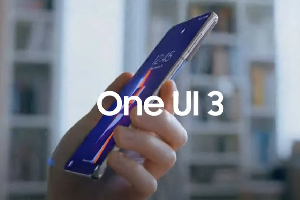Screen presence is now a feature of the modern office
The pandemic embedded video into the workplace. Workers who had never previously been on camera suddenly spent every hour of the day getting used to the sight of themselves and their colleagues on screen. Executives realised that they could send video messages to their workforces rather than having to convene town halls.
There is no going back. Blogs have become vlogs. Meetings are now recorded as a matter of course, so that people can fail to watch them back later. Some firms routinely ask applicants to record answers to certain questions on video, so that people can see how well prospective recruits communicate.
Since video has become more central to work, it pays to be good at it. Being a star in the video age means having the right set-up, speaking well and listening well. Workers can improve under their own steam, but companies can help, too.
To see what the right set-up looks like, just observe the range of images on your next video-conferencing call. It will probably be a complete mishmash. Some people will be bathed in the warm glow of a ring light; others will be emerging from the shadows like the Emperor Palpatine. Some will have high-definition cameras that show off every pore and follicle; others will be smeared across the screen. Some will be Hollywood types, observing the rule of thirds by positioning themselves slightly off-centre; others seem to have learned their craft from “The Blair Witch Project”.
There is a limit to how level the playing-field between home offices can be, when living arrangements between employees differ so greatly. Not everyone needs to look like an A-lister: people who regularly make presentations or see clients have greater claim on fancier gear. Some people are photogenic, others less so. But this range in video quality can nonetheless be narrowed.
A study published last year by Katherine Karl of the University of Tennessee and her co-authors looked at workers’ most common complaints about video-conferencing meetings: camera angles, proximity to the screen and bad lighting all feature in the list of frustrations. Whether providing decent home-working equipment or just giving feedback on how people appear on screen, employers can help everyone improve their video game.
Advice on how to present well on video is not that different to advice on presenting in general. But there are some specific pitfalls with video. One is where to look. Staring into the camera is unnatural; some advise pinning a photo of someone you respect right by the lens (whether you would really use the opportunity to talk to Volodymyr Zelensky to tell him about your product road map is another question). But looking at the camera is harder if you are referring to notes on the screen at the same time. The speaker whose eyes dart from one to the other is in fear of imminent attack; the speaker who gazes at a point somewhere just off to the left of the camera is appearing in “The Office”. Teleprompter software may be the right answer.
Another danger lies in the temptation to use technology just because it is there. The same rule of thumb that should stop you exploring the animations menu in PowerPoint also applies to pre-recorded video. Don’t do jump cuts or special effects unless you really know what you are doing. This is not “Lock, Stock and Two Smoking Quarters”.
Perhaps the least recognised skill in the video age is listening well. After all, one of the great boons of the virtual meeting is that you can get actual work done in it – being able to turn your camera off when your time is being royally wasted may be the pandemic’s greatest gift to productivity. And at the other end of the scale, one of video’s great downsides is how distracting it can be: as well as checking yourself out and following the online chat, you can critique someone’s new wallpaper while watching their next-tile neighbour shovel noodles into their mouth. It takes real effort to stay focused in such circumstances.
The wrong way for firms to tackle the problem of inattentiveness is to insist that cameras stay on or use artificial intelligence to analyse the sentiment of meeting participants in real time. As if life were not intolerable enough, imagine having to nod and smile dementedly the whole time in case an algorithm decides you are insufficiently engaged. The right way for companies to respond is to make meetings shorter and more relevant. Whether you are on camera or in the room, it is always easier to listen when there is something worth hearing.















